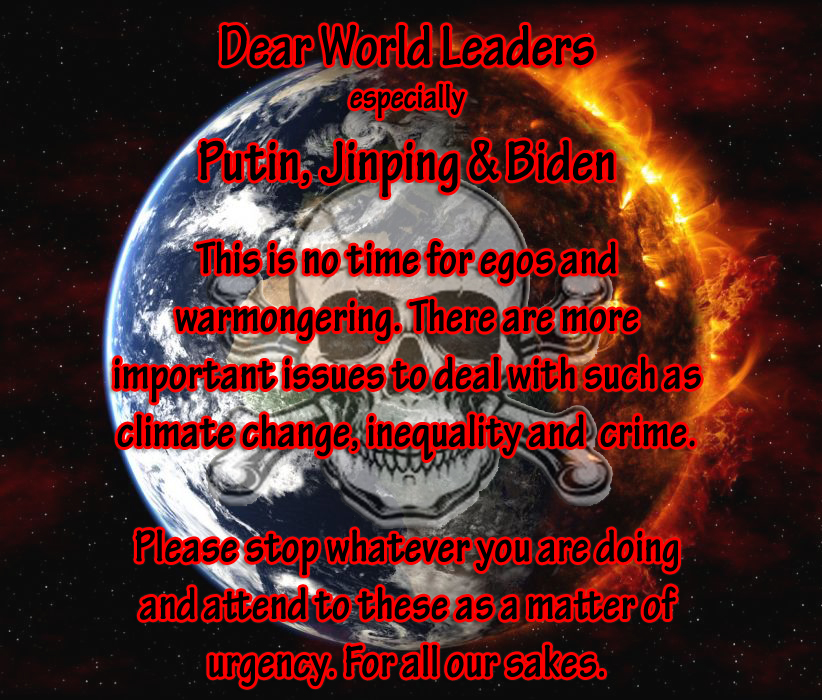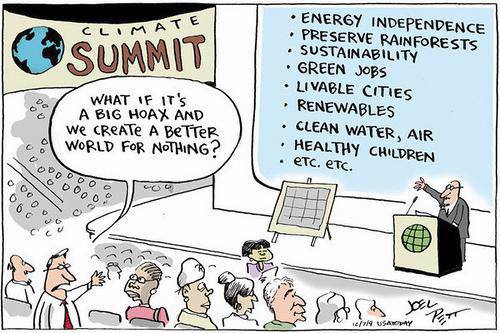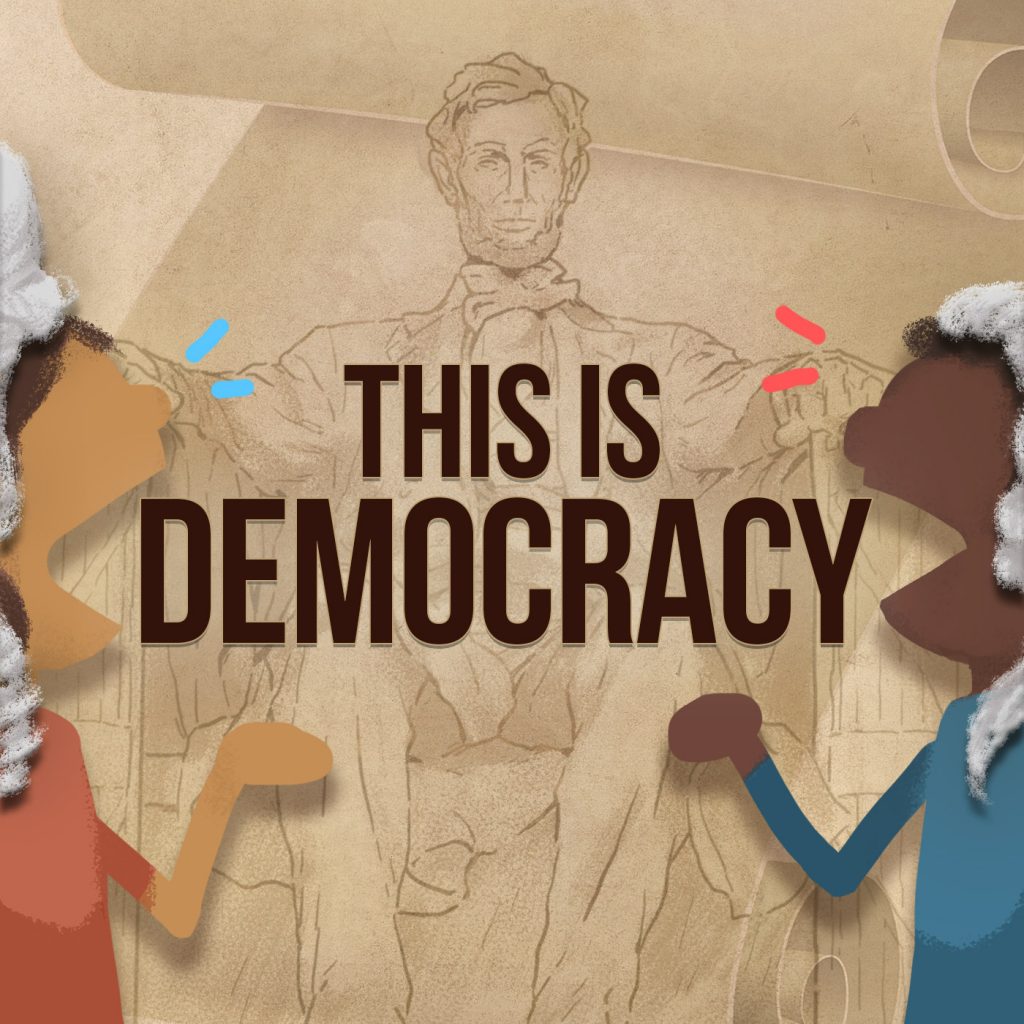
Appeal to world leaders for some sanity…

A forum for comment on anything not covered by the other categories; for example politics, religion, science and technology. In other words, a general blog.

I’ve calculated the amount of CO2 generated on my travels in 2019 and ways to offset it by contributing to a basket of carbon mitigation projects.
The results are surprising:
This is a minute amount of money compared with the many thousands of pounds I have spent on these trips. The conclusion is obvious:
I can easily afford to offset my travels and so can YOU!!
They say “charity starts at home” and I believe this to be true for carbon offsetting; while some people may contribute to the grand schemes by engaging politically, joining action groups or going on demonstrations etc., very few are willing to take responsibility for their own footprint and dip into their own pockets.
My aim is to be carbon neutral by the time I die; what about YOU?
I have allocated my “debt” over three projects, including a tree planting scheme in the UK. All projects I subscribe to are verified according to QAS standards.
You can also use the tool I’ve created – you just have to put your own trips in and refresh the pivot table. You can then allocate your contribution to the various projects as you wish. Please feel free to check my figures – all feedback is greatly appreciated!
I’ll be using it to offset my travels in 2018, 2017 … as far back as I have records for, which is about 1998. Before that it will be informed guesswork back to 1970 when I was eighteen and before which I consider to be my parents’ footprint – not mine. By the same token, I consider my children’s footprints to be shared between me and their mother, up to the age of eighteen.
“What about heating and lighting?” you might say. My answer: “Watch this space!”.
Natasha Thoday presents the case for maintaining a nuclear power element of world electricity supply as the only viable means of meeting demand whilst at the same time eliminating fossil fuel use and mitigating the variability of renewable energy supplies. The stark conclusion is that we will require more electricity from nuclear power than even the nuclear industry itself is suggesting, based on the Harmony Report which is remarkably vague about exactly what the non-nuclear element will comprise.
“This paper is an urgent call for political actors, parties and their networks in the UK to establish a robust long-term statutory framework to create the “Ultimate Power Couple” a Pro-Nuclear electricity generation partnership with Wind Water & Solar renewable energy in recognition that it is the physical world, of science, maths and engineering that determines what is politically possible, not the other way round. All the evidence presented and analysed here below, very strongly suggests there is an urgent need for such a new state supported industrial partnership to be formed: a) to create tens of thousands of new jobs building domestic infrastructure; b) to expand UK technology exports; and c) ensure immediate and ongoing action to realise and sustain these outcomes.“

Click here to download the full report.
About the author
Natasha graduated in 1982 specialising in 3D design, and worked in industry designing spiral staircases, and high end audio (vacuum tube, horn speaker & vinyl turntables).
She has written & filed 2 patents, rebuilt a 5 storey terraced house, is a secondary, further & higher education teacher, special educational needs (EBD & ASD), was diving officer at University of Brighton Sub Aqua club for a decade, and worked as a whale shark spotter at Ningaloo reef during 1 year tour of SE Asia’s wrecks & reefs.
In 2001 she completed a Post Graduate Diploma, Business Research, (first of two year MA Change Management), University of Brighton, throughout the early 2000’s active in Brighton’s multi agency Home Office funded Anti Victimisation Initiative (AVI), participated in University of Brighton ‘Count Me In’ research, wrote and won several high profile employment tribunal cases supported by (former) statutory body (EOC), in 2007 helped set up Transition Town Brighton, in 2011 helped Occupy Brighton.
Since 2013 Natasha’s been running a local electronic musicians collective that regularly puts on synthesiser jams and DJ gigs.
Since 2014 she’s been advocating for local people the ASD spectrum, helped secure local authority housing and written and won disability (PIPs & ESA) appeals.
In 2015 Natasha completed the University of Cumbria MA equivalent online (MOOC) course Money & Society.

As a perennial non-voter (although I did actually vote once back in the seventies and I did vote yesterday), I feel in a good position to provide unbiased comment on the current system and to propose a way forward appropriate to twenty-first century Britain. I did actually send this to the Electoral Reform Society but I got no response!
As I see it, elections are about identifying issues, taking positions on them and grouping them into convenient bundles called political parties. These parties propose various ways to achieve objectives related to these positions and then spend vast amounts of time and money trying to persuade us to vote for them and give them real power.
Good reasons for not voting can be summarised as:
I won’t propose anything as radical as dismantling the party system, rather a pragmatic and more high tech approach for enhancing the existing democratic process.
So how do we make things better? How can we make people like me go out and vote … meaningfully?
To be well informed enough to take a stand on any issue requires a certain level of engagement: your own personal experiences, paying attention to the media, discussions with friends, relatives and colleagues, doing your own research through reading and looking things up on the internet etc., above all keeping an open mind until it’s time to form an opinion. There is no way round this, it is everyone’s basic homework; even I can do that.
After that it gets a little trickier so, rather than writing a thesis on the shortcomings of the existing democratic process, I will cut straight to the chase. Consider a website with the following features:
Personal login. Create your own profile by filling in a questionnaire on a range of issues addressed by political parties and politicians. Create your own issues. This information is kept private but is used in creating statistics which are public. You can update this any time. You can see issues created by other people.
Political parties have a similar profile, reflecting their manifesto. This knowledge is public.
Actual and prospective politicians also have profiles which are public knowledge.
Profile matching. Using technology developed for internet dating, you and the politicians are matched against the available parties and each other so you can see how well you are matched, the differences and commonalities. You can see how well politicians and parties are matched to the general public (assuming membership of this website is extensive). This will give a much better indication of who to vote for than conventional methods.
The software can provide “what if” scenarios, suggesting new parties and alliances, changing politicians from one party to another and keeping track of the quality of matches. This makes it possible to design new parties that reflect the interests of the public, rather than historical precedent, and their likely success in an election. The possibilities are endless.
Virtual elections and referendums. Statistics compiled from user profiles will provide a continuous referendum and polling mechanism. To make things more interesting, you can take part in virtual elections and referendums on a regular basis. The results are presented in real-time as the votes come in.
Standard social networking features such as news feeds, forums, discussion groups, activities, dating, advice etc.
This kind of website would make disinterested people like me sit up, take notice and feel part of a developing culture which is evolving in real-time right in front of your eyes. Democracy in action as the ultimate social network.
We already have the technology for doing this, so I’m not going to go on about online voting, digital signatures and internet security etc. or anything else that requires radical re-engineering and education. There is an infrastructure in place for collecting the votes of millions of people all around the country and processing them in real-time every week. It is called the National Lottery. Using this could put an end to traditional polling stations, polling and the endless speculation and commentary by overexcited pundits and politicians. Of course it would need modifications and measures to limit fraud, but it is basically already there. The following modifications would be enough to ensure a smooth, accurate, open and fast process for voting in elections and referendums:
People on the electoral register receive a bar code by post or email.
Voters take their bar code to their local National Lottery outlet and get a card printed with the voting choices on it.
Voters mark the desired boxes and hand the card back to be read by the National Lottery card reader.
New software in the National Lottery database collects the results and publishes them in real-time on the internet.
That’s it!! Simple. I’d vote for that.
© 2019 Carl Nicholson. All rights reserved.